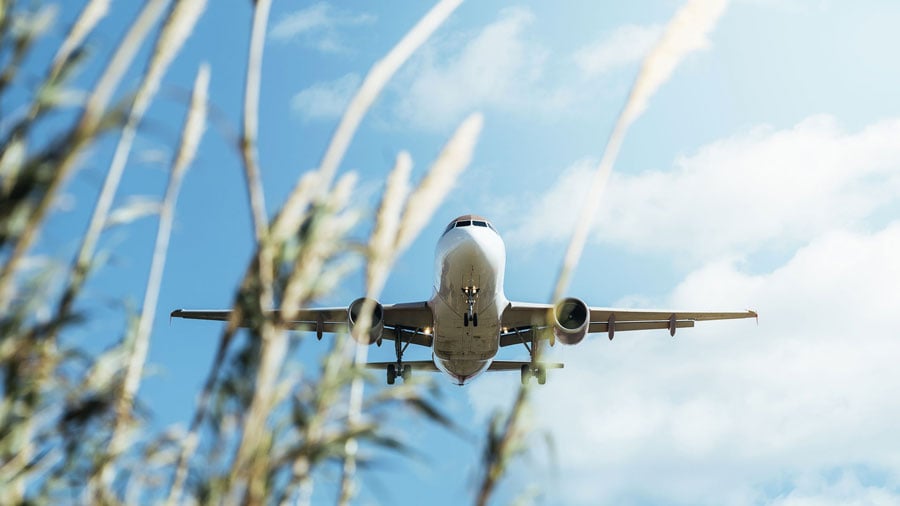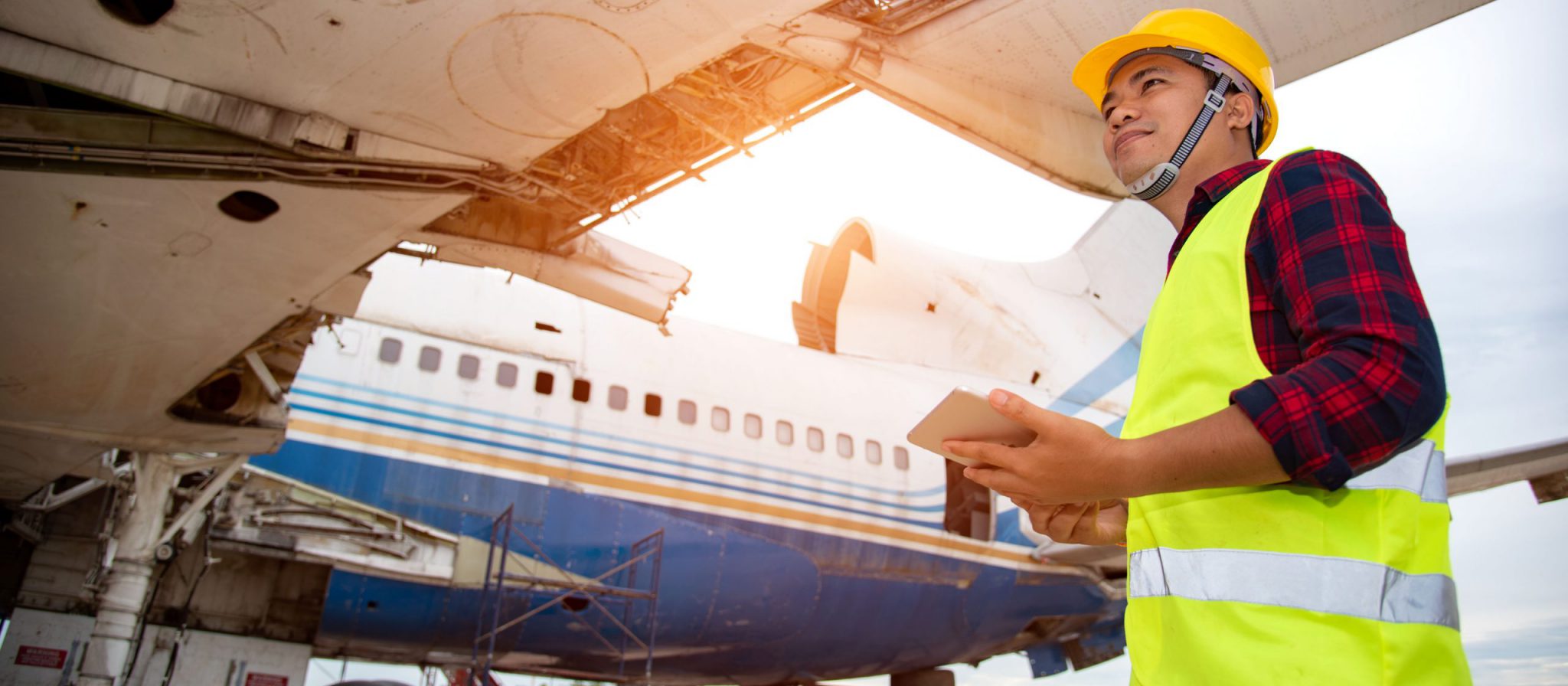2020 was one of the worst years for the aviation industry due to the Covid-19 pandemic.
Thankfully, this year is now behind us and we need to focus on how to revive our industry, what lessons have been learned, what trends we need to focus on to ensure passengers and employees safety, and how to streamline airport and airlines operations with sustainability, technology and training in the aim of boosting their growth.
Sustainability more than ever
The negative impacts that COVID-19 has had on the world are well known, but if there is one positive point that stands out, it is the decline in pollution. It is certain that COVID had an impact on the drive towards sustainability for the industry. COVID has been good for the environment, with far fewer planes in the sky and the retirement of older and less efficient aircraft removing tons of carbon, both today and for the future.
“This crisis is an opportunity for the industry to review and recommit to its sustainability targets. One of the likely outcomes that will aid this effort is airlines making moves to permanently retire less fuel-efficient aircraft. However, if we are to keep up this momentum, global governments must provide additional incentives, clearer guidance, and invest more in green technology for aviation, including the modernization of air traffic networks.” says John Broughton, Senior Vice President, Aircraft Operations and Safety at Inmarsat Aviation.
The main objectives in terms of sustainable development for the coming years is decarbonization and green technology investment. Compagnies such as IAG, Japan Airlines or Qantas are committing to net-zero carbon emissions by the year 2050. Finnair for its part aims to achieve carbon neutrality for 2045. Of course, this can be made all the easier with the digitization of the industry. We understand 0 carbon may be hard to reach but we can already make efforts on other liquids wastes such as glycol.
“We cannot afford to let sustainability fall to the bottom of our agenda. Digital technologies can not only facilitate a rapid transformation towards a more sustainable future but also offer commercial benefits to airlines and their passengers. Combining real-time connectivity with big data can reduce energy wastage by unlocking efficiencies and reducing operational disruptions, therefore creating savings and revenue opportunities.” says Philip Balaam, president at Inmarsat Aviation.

Technology: AI, Machine Learning and Cloud
If 2020 was not the year of travelling, it has been the one of technology and innovation for sure. Airports and airlines must redouble their efforts to increase passengers trust but also workers with measures that must be taken to keep their working environment safe.
2021 will therefore be a turning point in digitization. In order to regain the confidence of users (workers and passengers) the acceleration of digitization is necessary, and this now requires artificial intelligence.
The contactless processes that we are currently familiar with, such as payment by phone, facial recognition, touchless washroom doors and handwashing fixtures, are now going much further thanks to AI. Entire airports are becoming data-collecting environments that provide real-time safety information such as thermal scanning, crowd management and social distancing or even notifying cleaning crews to alert on issues. Predictions and recommendations provided by Machine Learning algorithms therefore enable adaptability and improvement of health and safety precautions and processes.
Innovation is also found in management software. Whether it’s for equipment management, ground handling operations or training, cloud migration has become essential to ensure continuous and unified visibility of operations, as well as data reliability and unbiasedness. In addition to these benefits, cloud-based platforms bring maximum protection and privacy of data.
And finally, the trend continues for IoT (Internet of Things). Coupled with AI, IoT creates a network of data-producing devices and assets that converse and increase efficiency across the airport. Such as robots, autonomous vehicles, virtual agents and many more.

Training: the next challenge to tackle
As AI, machine learning and cloud, training will be key to efficiency in the next couple of years. Indeed, the entire implementation of these technologies cannot have a positive impact without perfect employee awareness and training. Engaging and retaining your employees is crucial to ensure their satisfaction and thus provide great customer experience. Upskilling and reskilling are mandatory to support and make this digital transformation a success in which all workers have to be involved.
IT transformation such as cloud migration require teams to accept a new model and consequently an outstanding change management. Let’s take an example regarding cloud migration. To allow perfect synchronization of teams and guarantee the efficiency and speed of projects, the implementation of a DevOps process is highly recommended.
The implementation of such a strategy assumes that all employees are trained in the new processes and understand its issues and purpose. Training is mandatory to ensure the success of this project, on the one hand because workers must be trained in the new tools. But above all, there is a great deal of effort to be made on soft skills to ensure team understanding and agreement. The same applies to the implementation of the AI or IoT. Not all employees have the same background and it is important to take into consideration that what seems obvious to some is not to others. It is in precisely this sense that training helps to put them on an equal basis and ensure that all have sufficient knowledge to move forward.
Digitization as a recovery solution
The COVID-19 pandemic has and continues to challenge the aviation industry, but the efforts that have been and continue to be made in terms of technology, training and sustainability are considerable and give hope for an optimistic future.
This pandemic is an opportunity to rethink and refresh a sector that was previously lagging in terms of digitization, and now offers not only outlook for a revival of activity but also employment perspectives.
Above all, the accelerated adoption of a digital future is the key for a more successful recovery.
Sources
Six technology trends set to transform air travel in 2021 (traveltrendstoday.in) – T3 – David Lavorel (Airports and Borders) – January 6, 2021
Why COVID Won’t Set Back Aviation’s Sustainability Goals – Simple Flying – Joanna Bailey (Fraport AG) – July 14, 2020
IATA CIO on how his tech strategy is aiding pandemic recovery in aviation – Information Age – Aaron Hurst – January 4, 20201
Airports are tailoring measures to assist everyone – International Airport Review – Jean-Sébastien Pard – January 6, 2021

